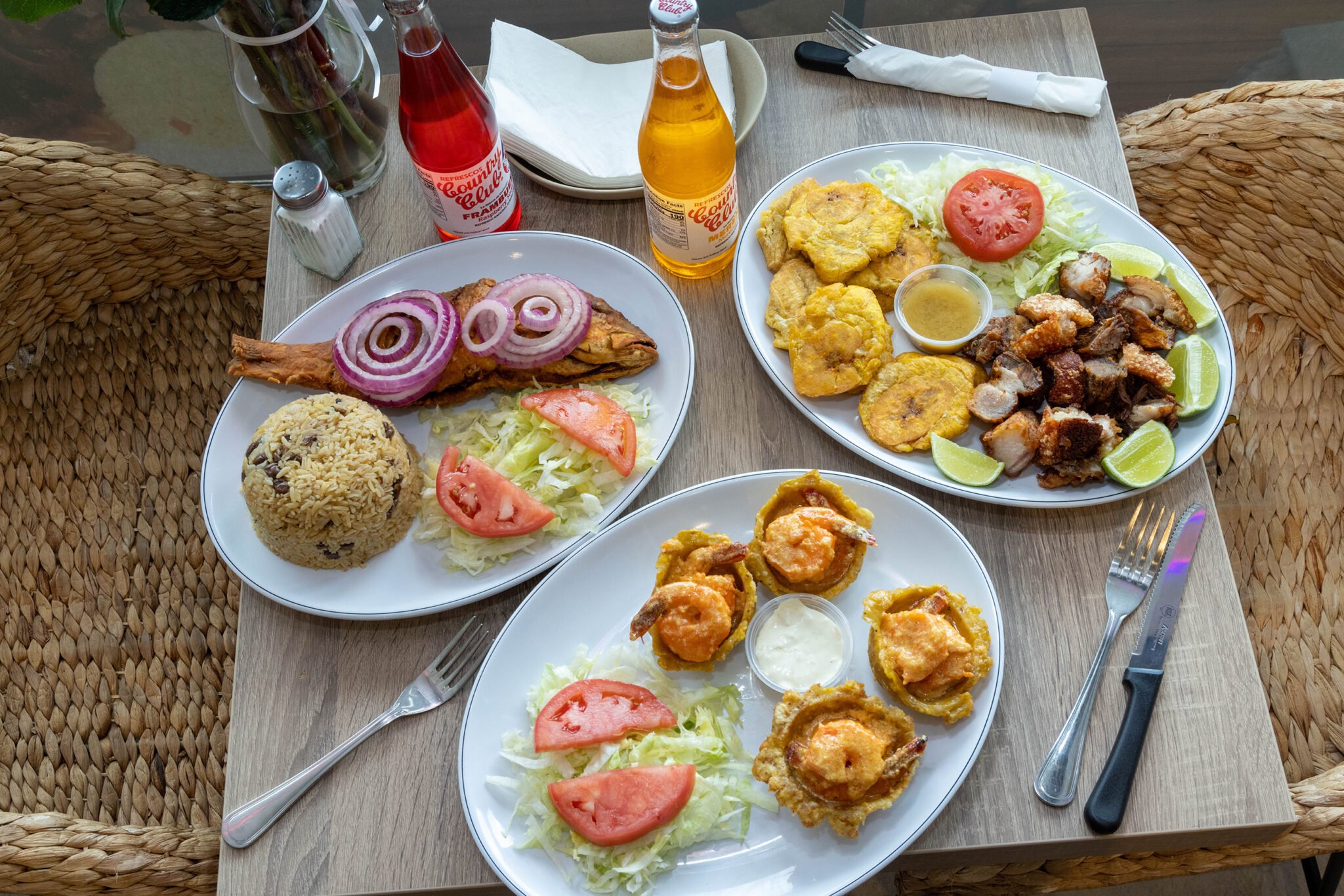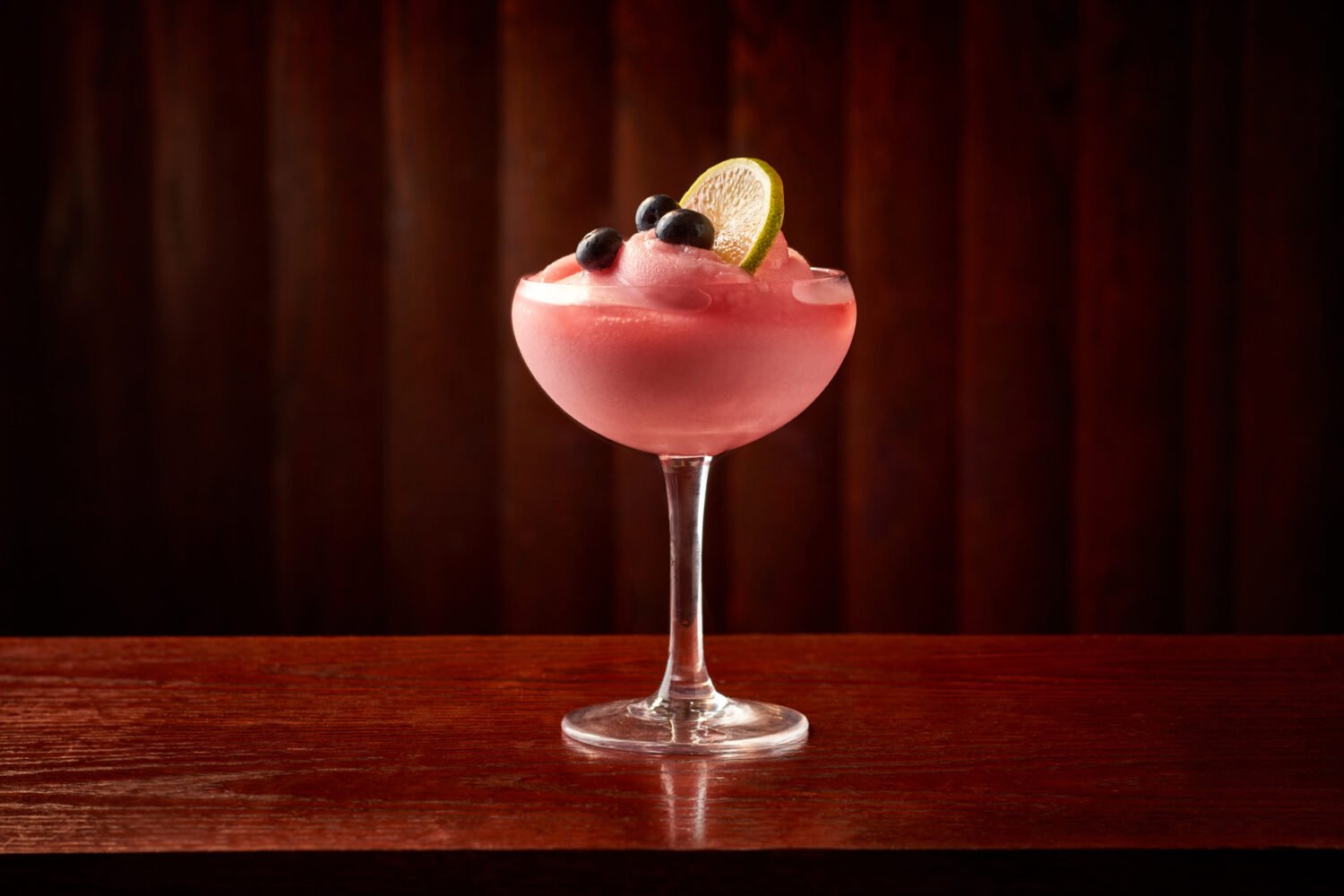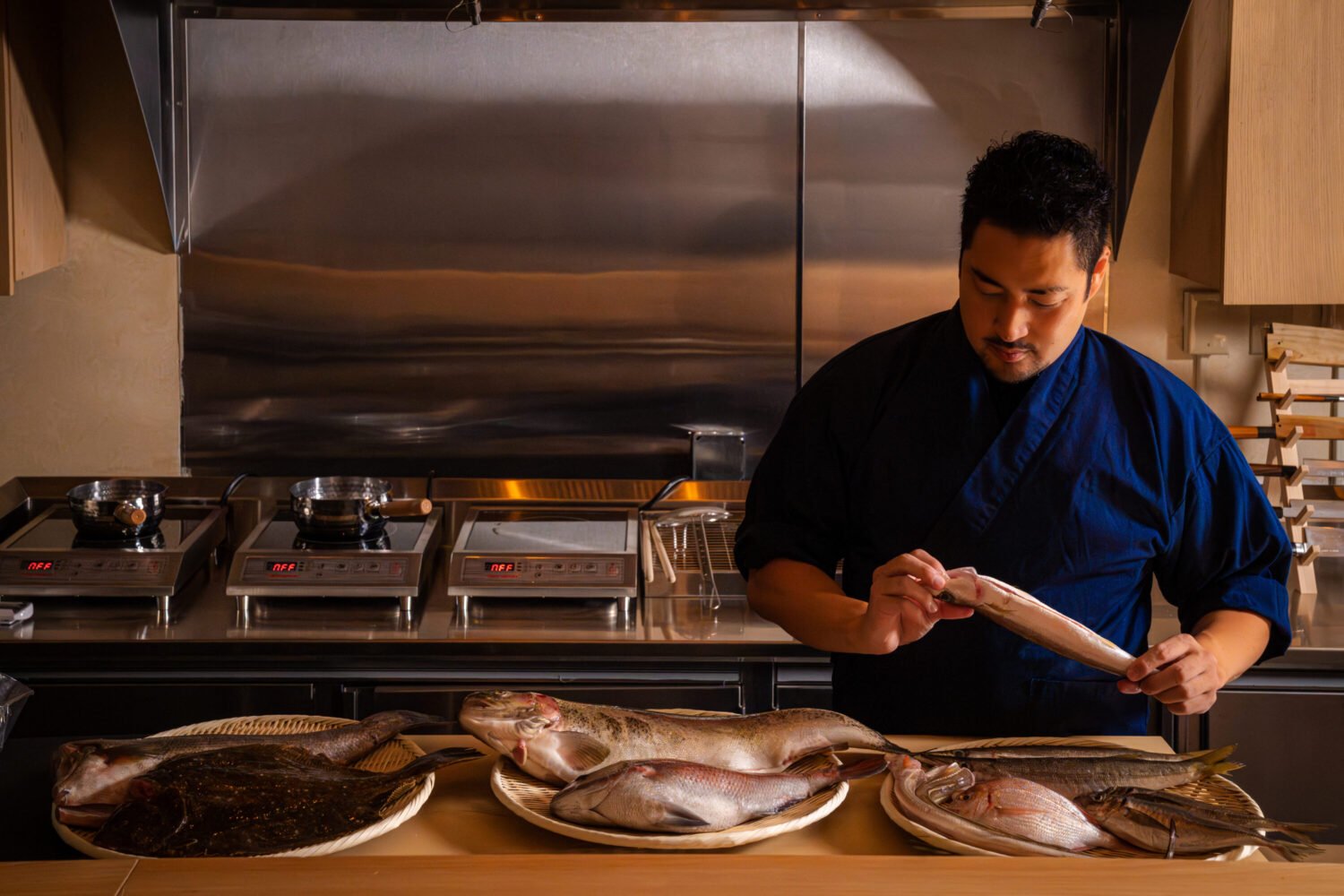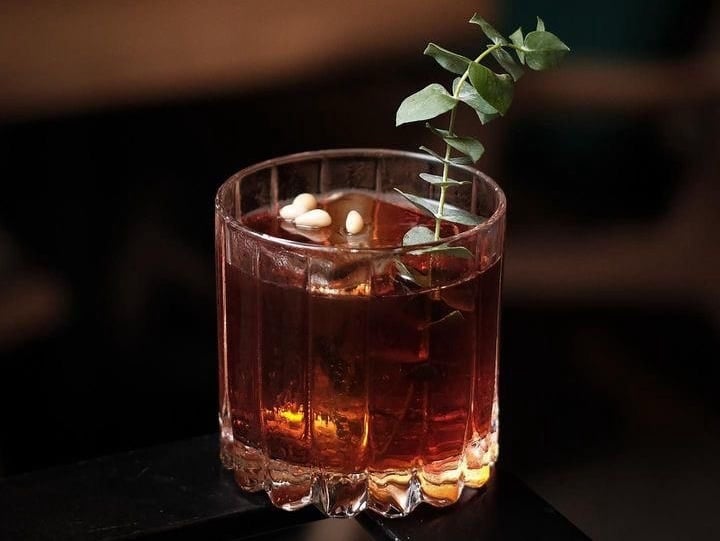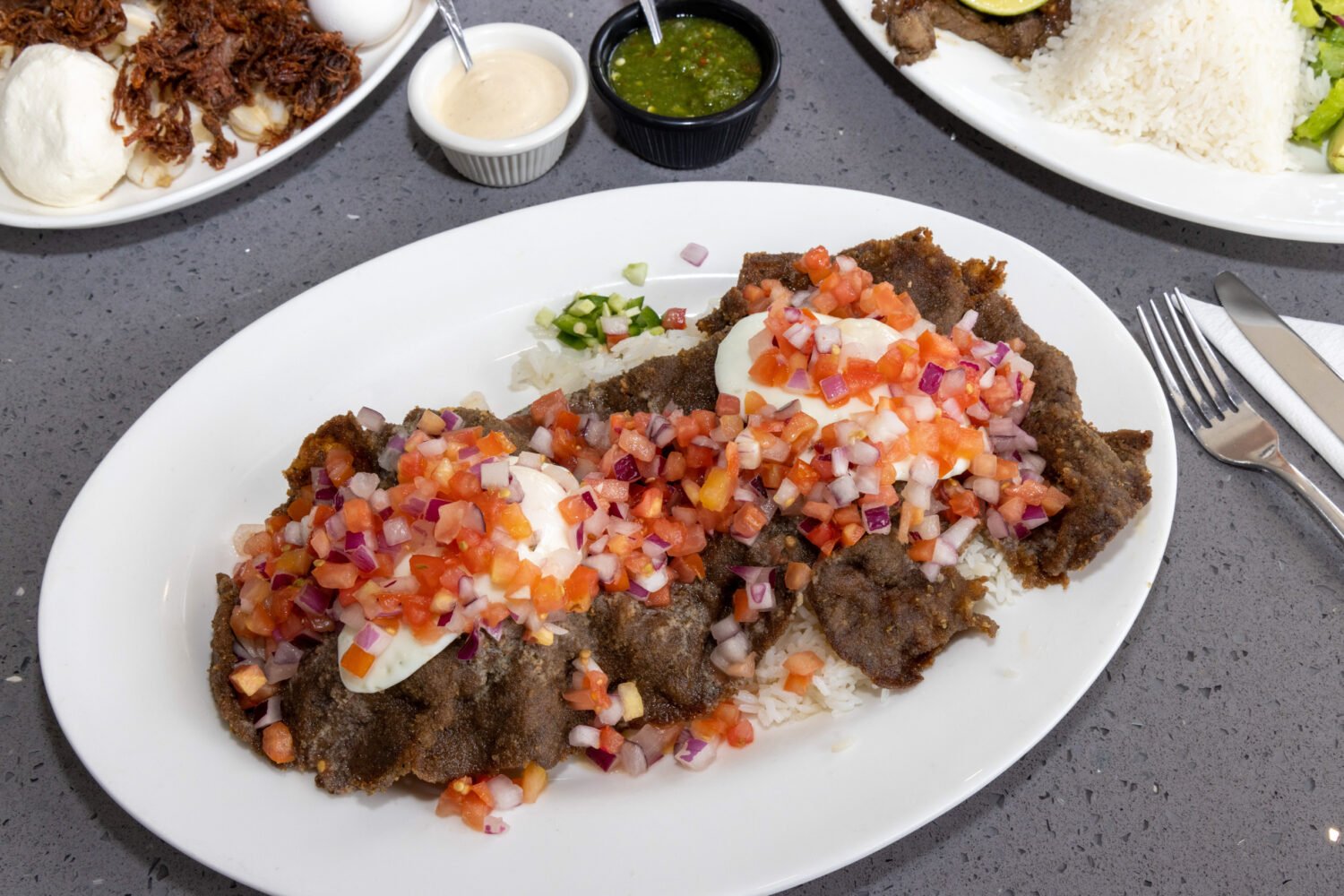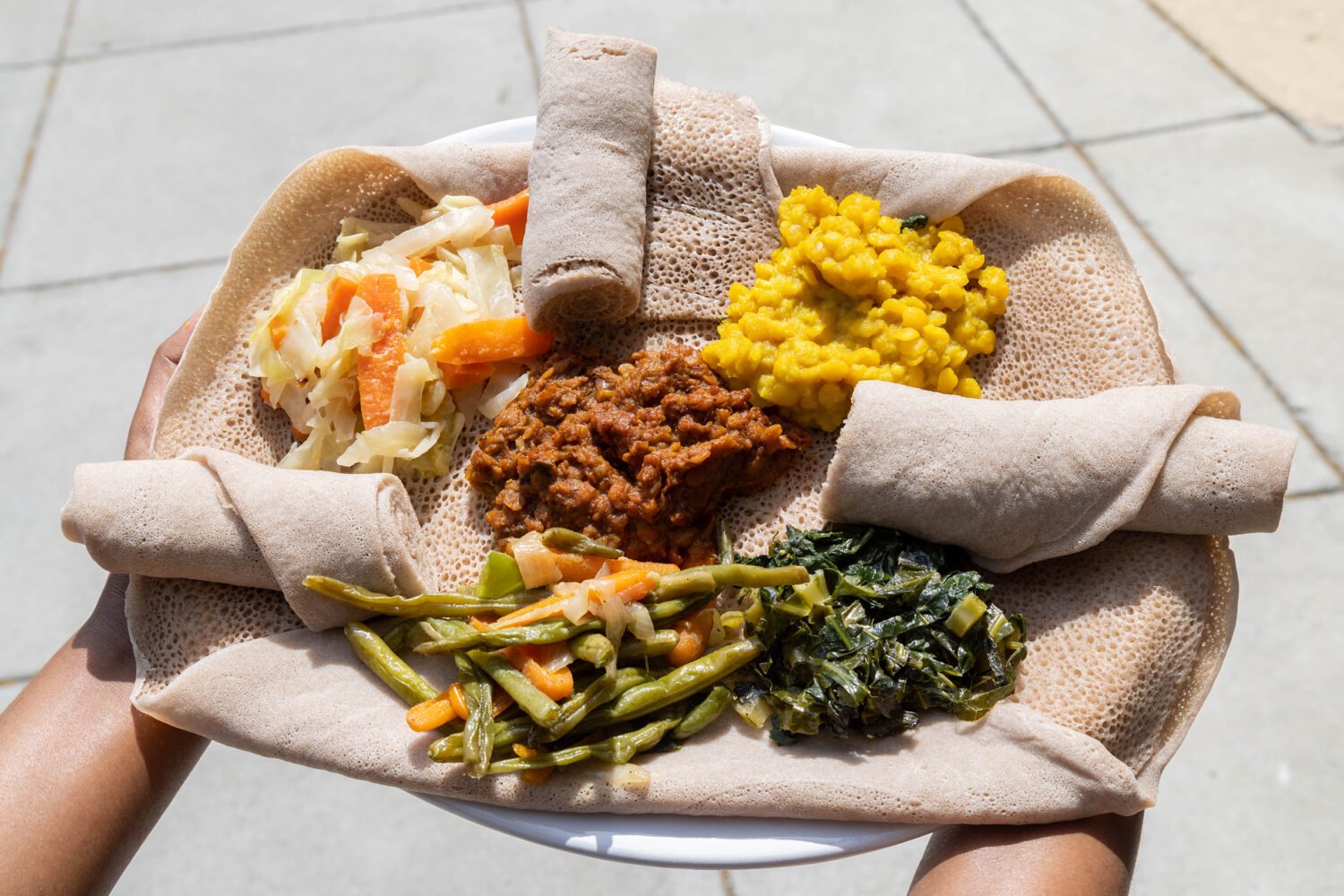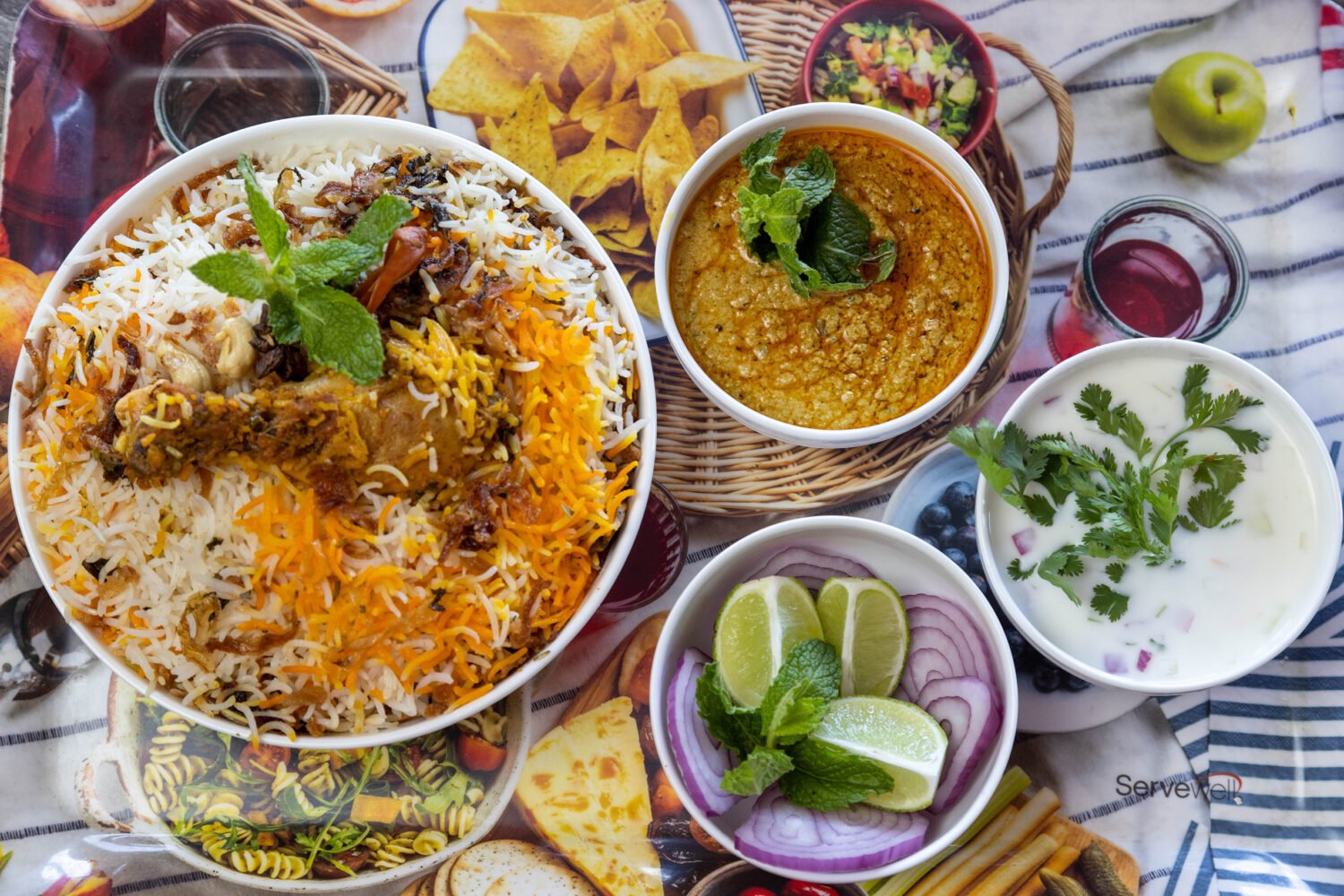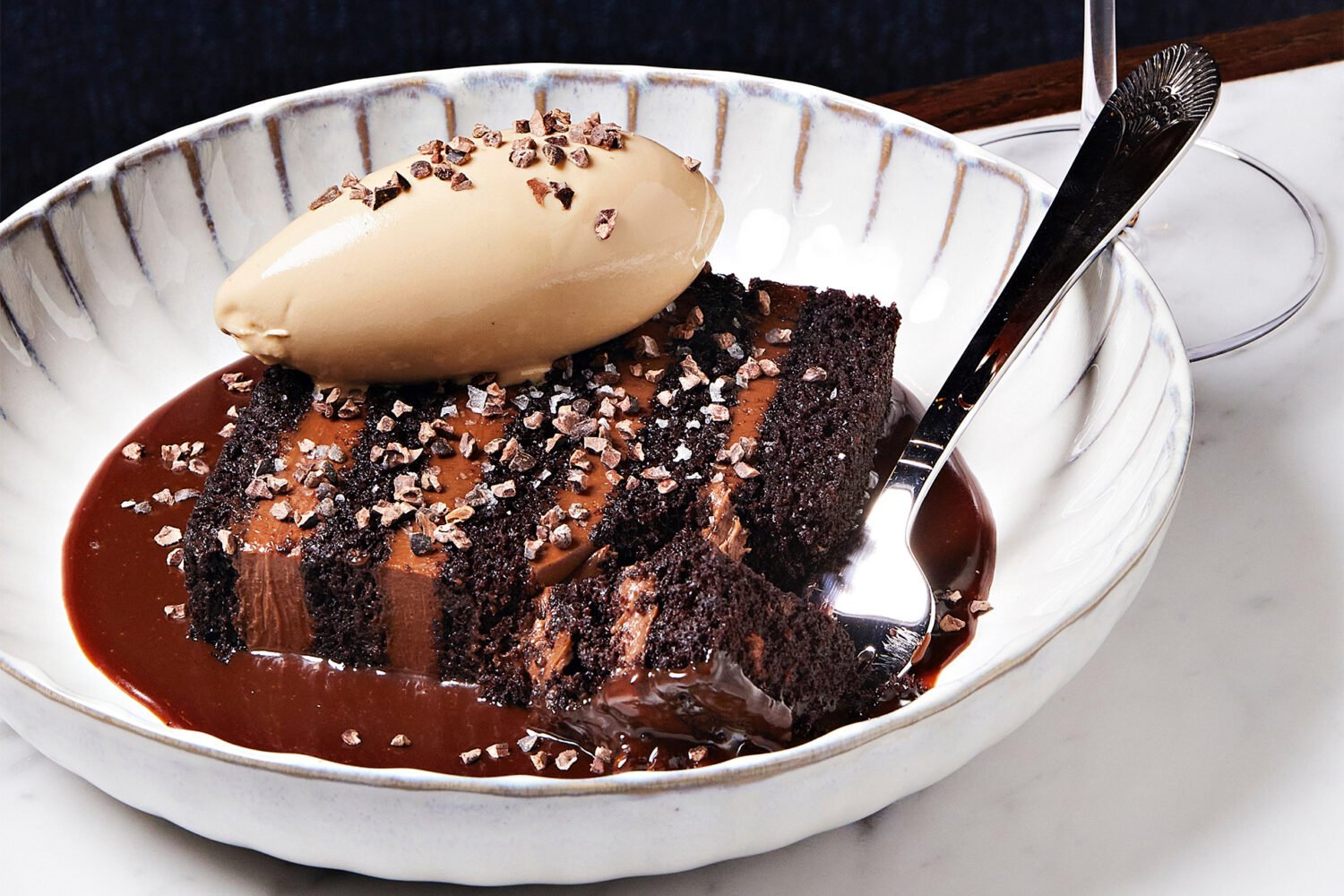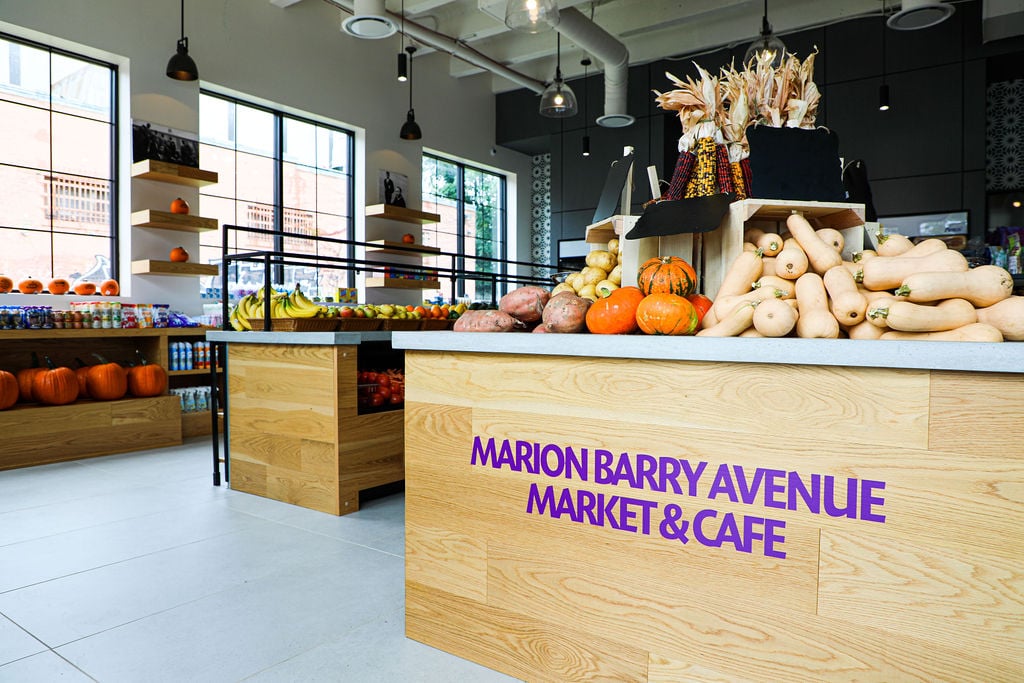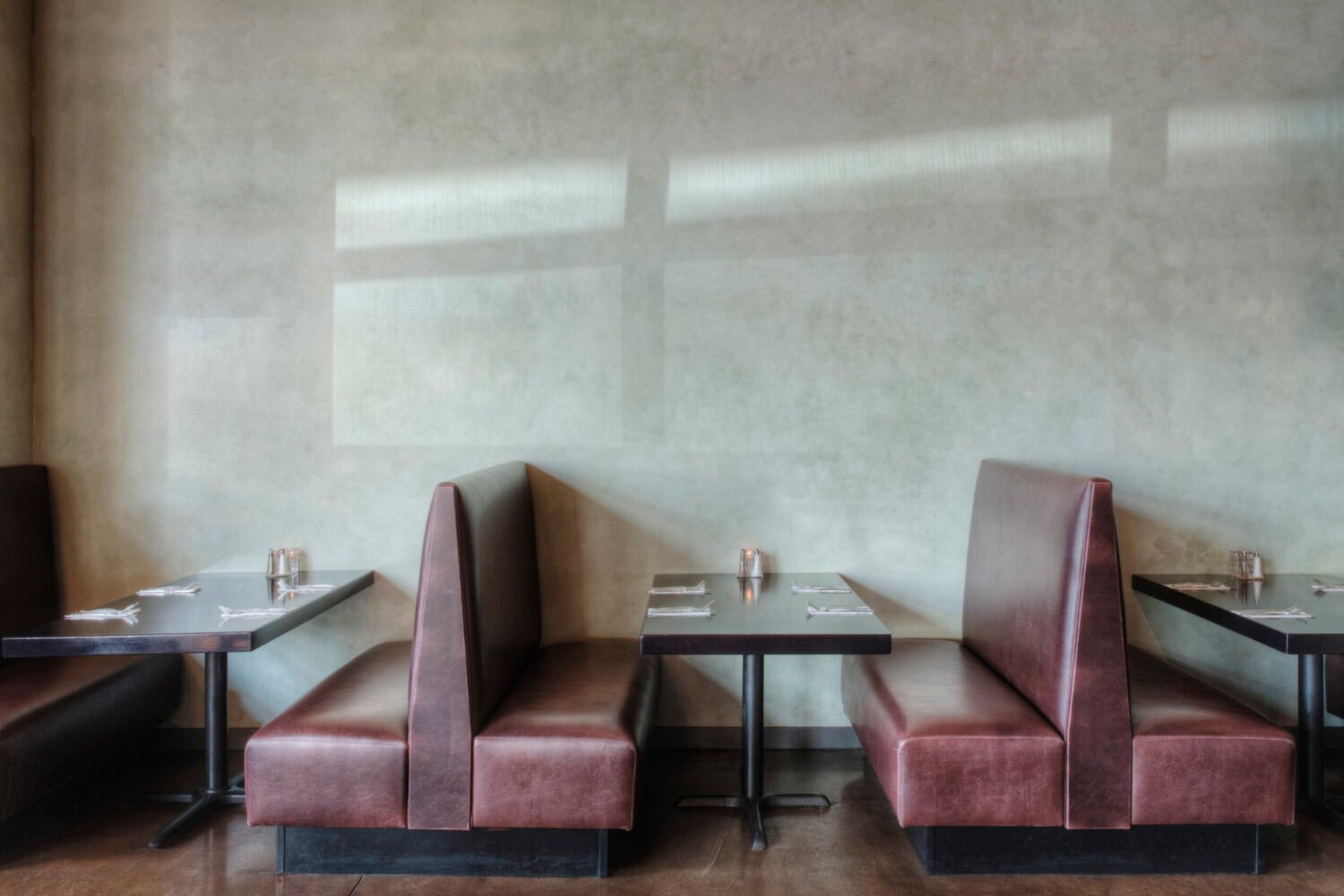Fried plantains are as much of a takeout staple in suburban Maryland as fries or coleslaw. They fill up to-go containers at pupuserias, Peruvian rotisseries, and Caribbean spots. But nowhere gives the plantain as much opportunity to show its range as Punta Cana Tropical Grill, a friendly, laid-back strip-mall restaurant on a noisy stretch of Georgia Avenue that’s often snarled with Beltway on-ramp traffic.
Arguably the highest form the plantain can achieve is mofongo—freshly mashed, fried, and mounded onto a plate with chicharrón, shrimp, or chicken. Punta Cana also serves mofonguitos, the same mash formed into cupcake-size shells that hold meaty fillings. Green plantains fried and pounded into flat disks—tostones—are one side option; another is sautéed maduros, sweet or “mature” plantains.
Margarita Rodriguez, a Maryland native who grew up in a half-Salvadoran, half-Dominican household, opened Punta Cana last December, inspired by some of her earliest memories of trips north.
“We would go a lot to New York, and we’d go to eat, when we were younger, just for the heck of it, and we loved the grab-and-go Dominican trucks,” she says. “So that’s kinda what we wanted to set up for Maryland.”
Punta Cana, though, doesn’t call to mind a Bronx chimi truck as much as it does the restaurant’s namesake beach town. Rattan chairs and blond wood make the place feel breezy and even luxurious for a carryout shop. The sound-track—bachata, salsa, and reggaeton classics—reminds you how much the Spanish-speaking Caribbean has influenced the world’s dance music.
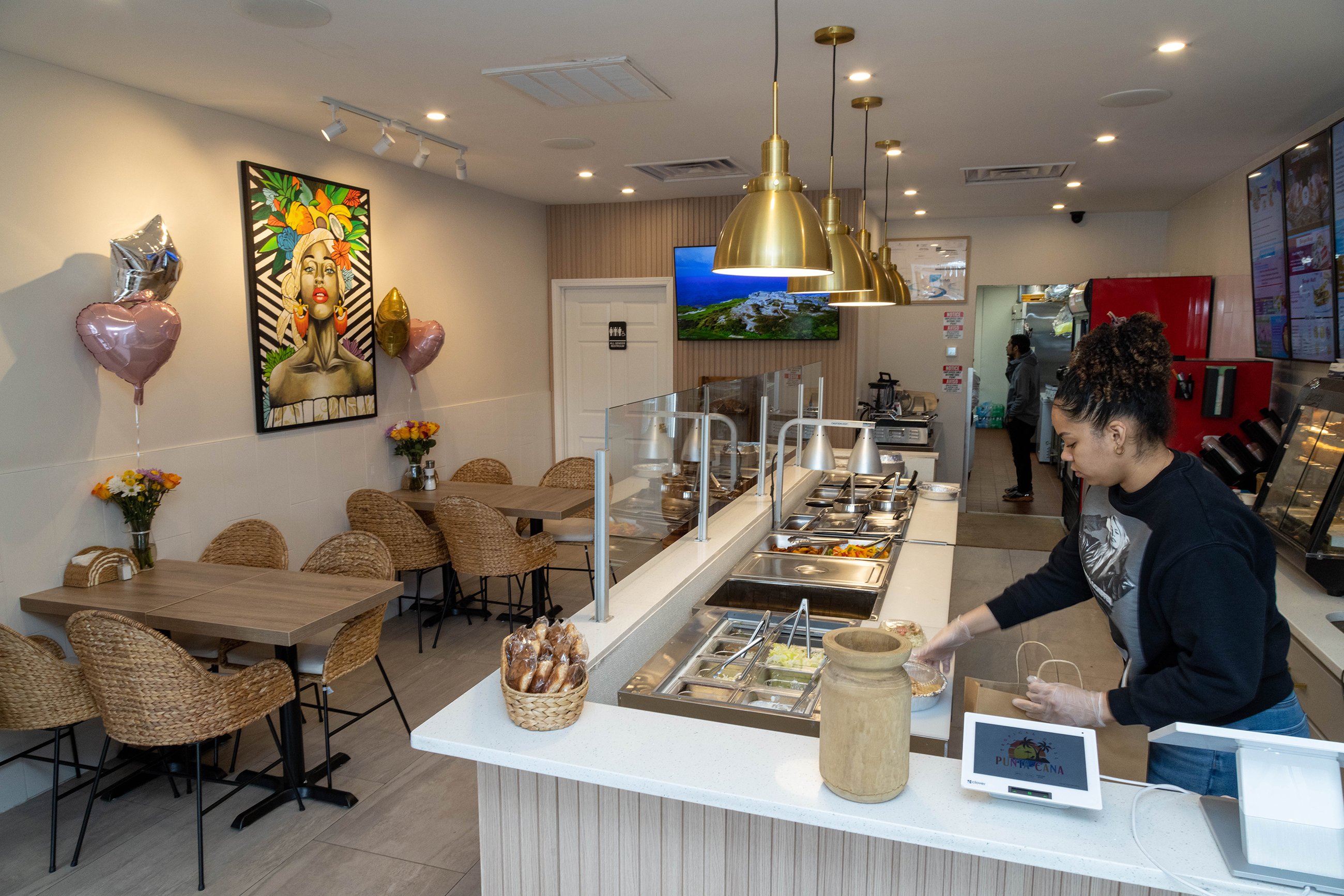
What Rodriguez calls “create-your-own bowls,” in the parlance of business-casual salad counters, are really just the classic, rice-beans-and-meat plates of Dominican steam-table lunch counters. In parts of New York, New Jersey, New England, and Florida, you might find a place like this on nearly every corner. But in the DC area—apart from the solid Casa del Mofongo, just across Georgia Avenue—you’re unlikely to stumble on another one.
Rodriguez’s menu, cooked by chef Yacelis Cabiales, goes way beyond plantains: It encompasses much of traditional Dominican cuisine, from crossover hits to deep cuts. Empanadas stay warm in a glowing cabinet behind the counter. Next Easter season, don’t be surprised to see habichuelas con dulce, the idiosyncratic and delicious Dominican dessert made with red beans, cinnamon, and coconut milk.
At the steam table, the protein you select with your yellow rice and black beans—or white rice and red beans, or mixed peas and rice—will depend on availability. Pernil (pork shoulder) comes either stewed or roasted. Sometimes, there’s bacalao—salt cod stewed with bell peppers and onions. Just point to whatever looks best and ask about it.
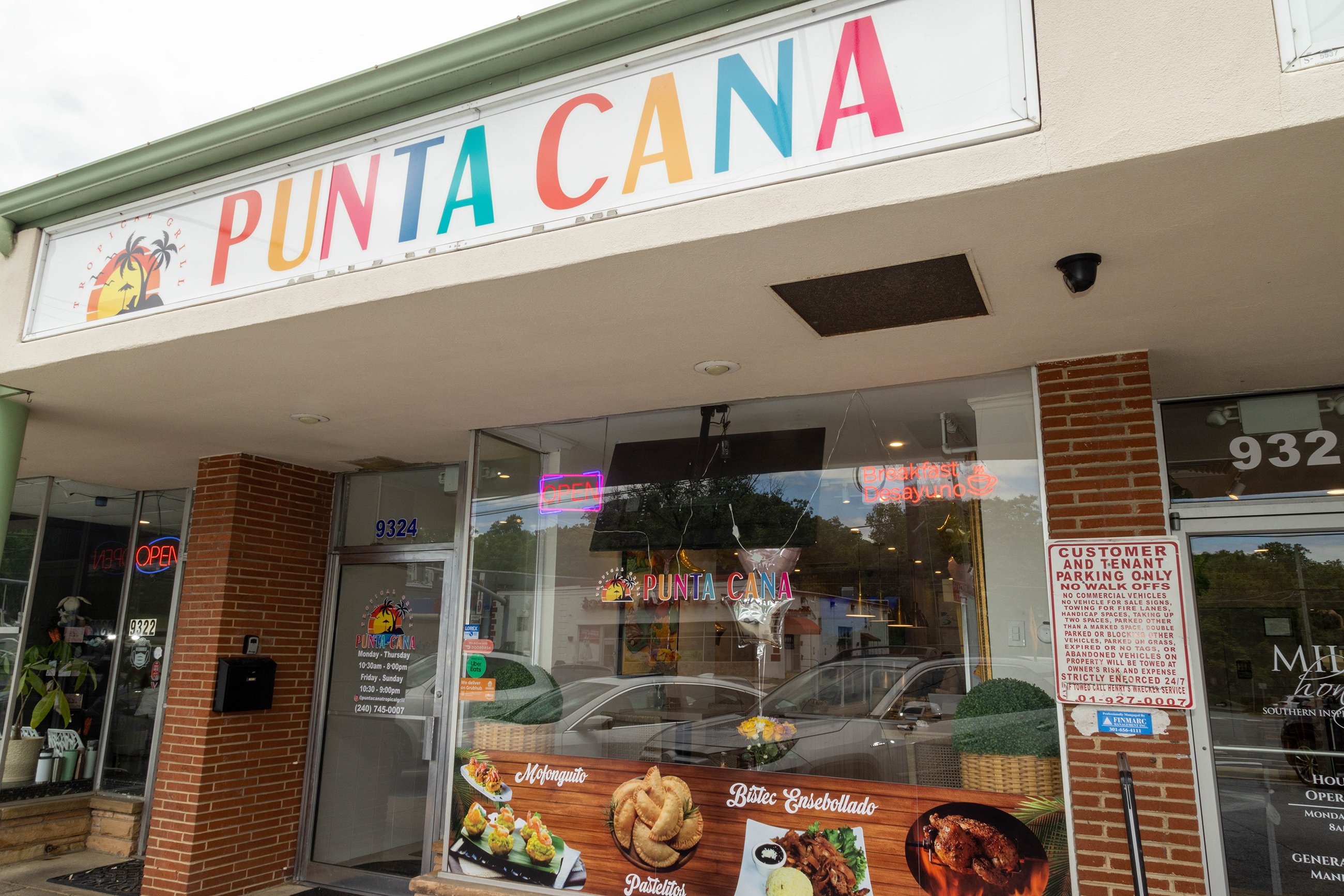
For years, Rodriguez says, it was hard to find the Dominican style of crunchy chicharrón close to home— she’d usually make a special trip to Los Hermanos in Columbia Heights. Punta Cana’s chicharrón—which can be ordered with mofongo or alone—is excellent: small chunks of pork belly fried into crystalline shells and topped with a squeeze of lime. On a recent visit, one Colombian diner told me she’s formed a habit of taking the leftover pork home and serving it with steamed sweet potatoes.
“I’m glad to be in Maryland,” Rodriguez says, “seeing all the different nationalities that come in here and enjoy our food.”
This article appears in the July 2025 issue of Washingtonian.

